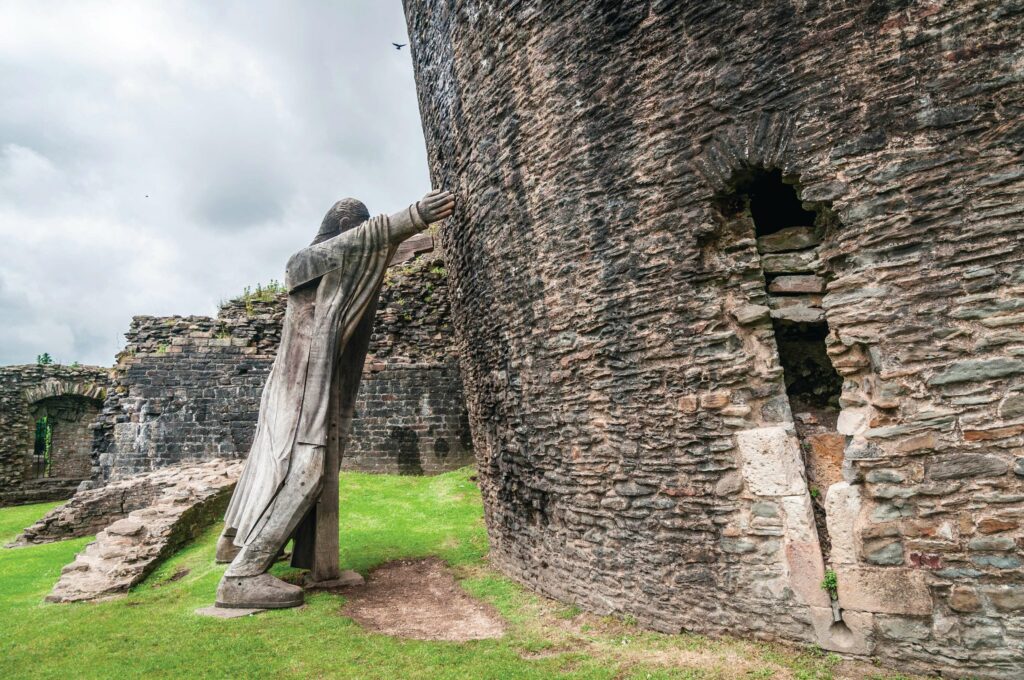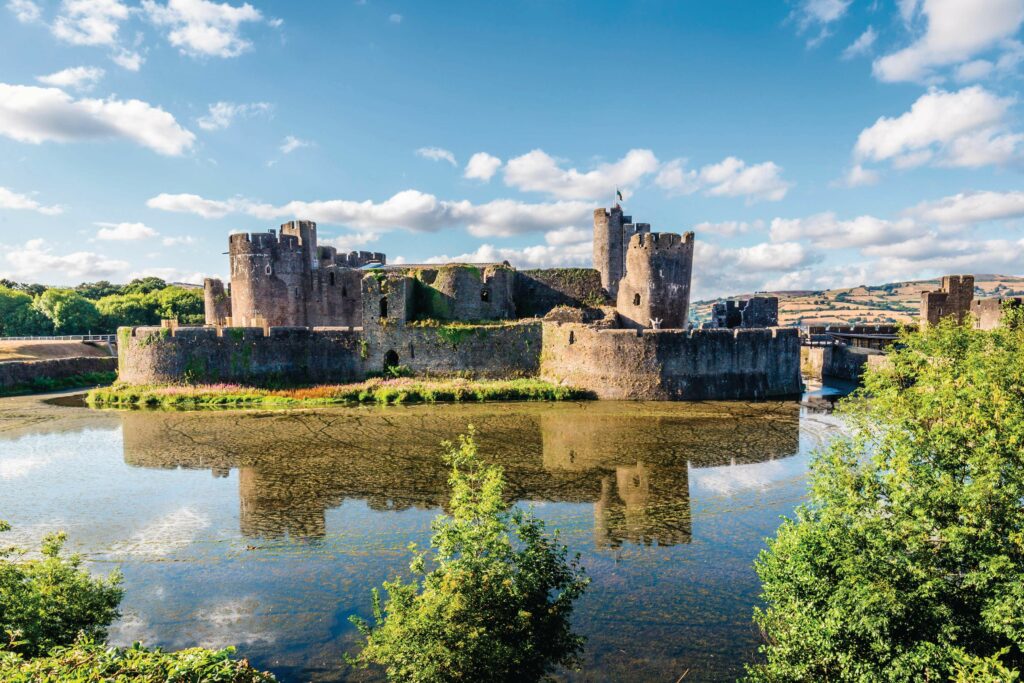DAY OUT: Caerphilly Castle, Caerphilly
A leaning tower to rival Pisa
The rise of a redoubtable Welsh prince inspired the speedy construction of one of Britain’s mightiest and most defendable medieval castles, discovers Margaret Bartlett

How do you prop up a stone tower leaning at more than 10°? Very Caerphilly. Cheesy puns aside, the tilt of Caerphilly Castle’s Civil War-damaged south-east tower surpasses Pisa’s by a whopping 6°.
But here you have to share your holding-up-the-tower snap with a six-metre-tall statue that’s already doing the job. The sculpture represents John Crichton-Stuart, the 4th Marquis of Bute, who, from 1928 to 1939, continued the restoration of the castle started by his father.
Dominating the heart of Caerphilly, this awe-inspiring 12-hectare fortress is the second largest in Britain, behind only Windsor Castle. Commissioned by Gilbert de Clare in his bid to defy Welsh prince Llywelyn ap Gruffudd, it was built in a rapid three years, between 1268 and 1271. The first concentric-circle fortification in Britain, its design – on an island surrounded by artificial lakes – made it a formidable bastion. Allow a couple of hours to explore the huge gatehouse rooms, the reroofed medieval Great Hall, and the impressive recreated wooden fighting platform.

Complete your visit with a walk around the castle’s lakes; designed as a sophisticated network of moats and dams, they were among the most advanced water defences of their kind in Britain. Now, geese, ducks, moorhens, swans, herons and cormorants are at home on the water, and you may spot people fishing for carp, too.
This year, the Welsh heritage agency Cadw has started major conservation and development work on the castle, thanks to a £5 million funding boost, so check their website for amended opening times. cadw.gov.wales
Production editor Margaret enjoys finding new walks near her home in South Wales.